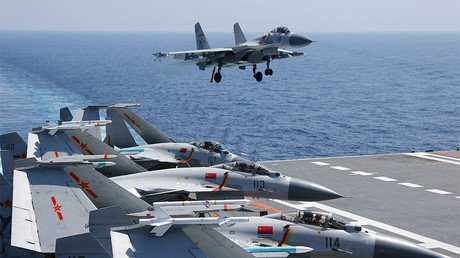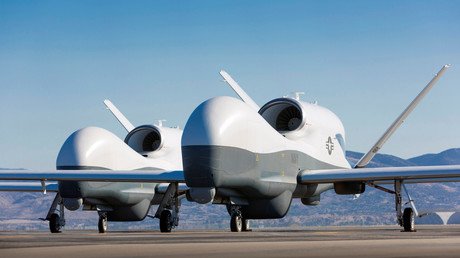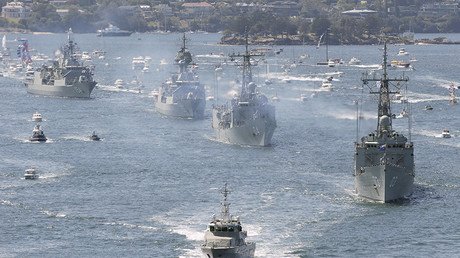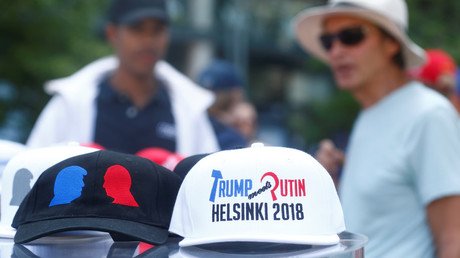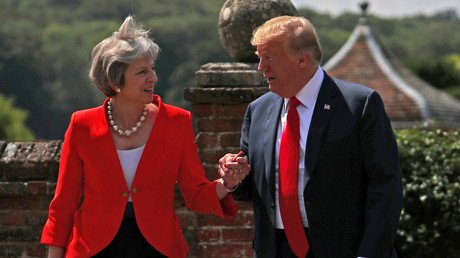Media silent as Pacific powers prepare for showdown with China
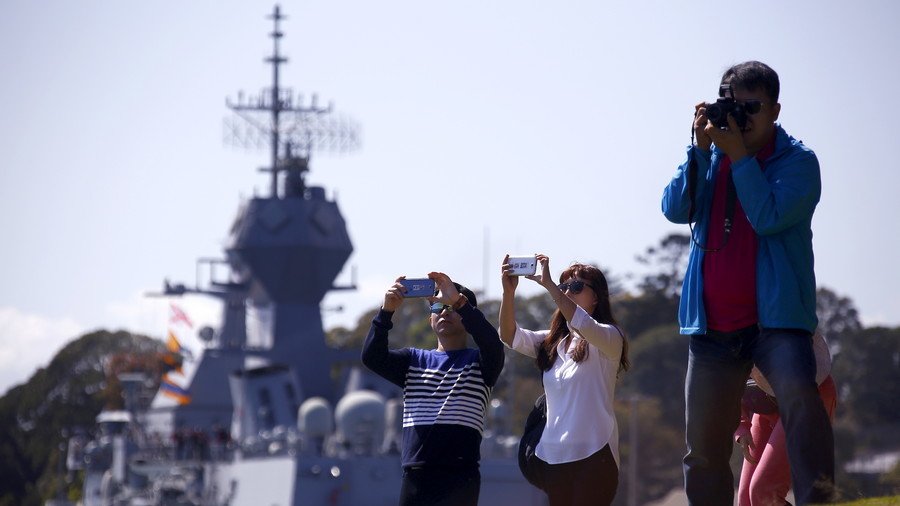
The US and its allies continue to implement a dangerous strategy to counter China’s growing influence in the Pacific.
These days, it’s all but too easy to get distracted by the stories the mainstream media overhypes on a regular basis and overlook some of those more pressing stories which fall beneath the radar. When you aren’t being purposely distracted by Donald Trump’s Twitter account, how he mistreats the Queen of England or how he is supposedly too nice to Russian President Vladimir Putin – stories like those on the football World Cup and the heroic rescue story in Thailand tend to fill the gaps, and not much else.
By watching the news on a regular basis, most of you probably wouldn’t even be aware that the major players in the entire Pacific theatre are preparing for showdown. Don’t say we didn’t warn you though; in March of this year I wrote an op-ed entitled“Australia and China on Pacific Ocean collision course and no one’s talking about it” in an honest attempt to get this story on the media’s radar.
No one is still talking about it, but as time goes on the stakes appear to rise consistently. Of course, you are free to read the situation however you feel and dismiss it if you so choose, but it cannot be a mere coincidence that Australia and New Zealand are in talks to sign a new “wide-ranging” security pact with other nations in the South Pacific with a specific intent of confronting China’s expanding influence.
Perhaps the reason has something to do with the recent Strategic Defence Policy Statement released by the New Zealand Defence Force (NZDF) which warned that China’s growing regional clout threatened the “values championed by the order’s traditional leaders” – whatever that means.
“New Zealand’s national security remains directly tied to the stability of the Pacific. As Pacific island countries’ relationships with non-traditional partners continue to develop, traditional partners such as New Zealand and Australia will be challenged to maintain influence,” the NZDF report read.
Oh, so that’s what it means. After what analysts have suggested was increased pressure from the US and Australia, New Zealand has had no choice but to change its tack and risk offending China by removing the reference to what it was once regarded as an “important strategic partner.” In response, China openly criticised New Zealand’s position, and asked that New Zealand “correct its wrong words and deeds.”
The United States, Australia and New Zealand genuinely fear the expansion of China’s influence throughout the Pacific region. Reports that China was looking to build a base in Vanuatu’s Luganville wharf earlier this year were quickly met with a counter-proposal from Australia. Just last month, Australia announced plans to pursue a security treaty with Vanuatu, even though China and Vanuatu had denied these early reports some months ago.
In order to quash these rumours completely, Vanuatu’s government even publicly released the contract for the wharf in question showing that there is no mechanism in place which would allow the Chinese to take the wharf for themselves should Vanuatu default on its repayments.
Australia has also agreed to fund an underwater telecommunications cable linking the Solomon Islands to Australia and Papua New Guinea (PNG) in a clear attempt to block Chinese firm Huawei from developing such a project instead. This move also comes at a time when a Deakin University submission to an Australian parliamentary inquiry, based on interviews with PNG business, political, academic and community leaders suggested that Australia was at risk of being diminished by rising Chinese aid spending. Allegedly, China’s “no strings attached” approach of granting loans to Pacific nations like PNG has made their aid “more effective” than Australia’s.
It isn’t enough to ask: why on earth is Australia undertaking an inquiry into the effectiveness of Australia’s aid in the Indo-Pacific region and “its role in supporting our regional interests” in the first place? Is aid given to a country in a lesser position to help it grow, or is it given to cement one’s own interests?
Even to this day, Australia remains the largest aid donor in the Pacific. The country plans to provide $1.3 billion AUD ($970 million USD) this year alone to the region, whereas China has provided roughly $2.4 billion AUD ($1.8 billion USD) to the region between 2006 and 2016 in total. In that same timeframe Australia pledged around $7.7 billion USD worth of aid of its own.
Despite this, predictions are that eventually Australia will completely lose out to China as time goes on. Not to mention that moreover, Australia is rapidly losing its voice in the region to China – quite literally. Just last month, it was revealed that Radio Australia’s shortwave frequencies into the Pacific and Asia were taken over by China Radio International.
Never one to quit, the Australian government is reportedly planning to spend more than $5 billion USD on long-range surveillance drones to bolster its maritime security in the South China Sea. The biggest benefactor of this arrangement is the United States military industrial complex in more ways than one; namely, because it is the US navy which will be supplying the aircraft and reaping the money (but also because the US has entrusted Australia to act as its buffer against China’s expanding influence in the Pacific region in the first place).
The potential for a confrontation seems more than just mere conjecture. The entire move is reportedly aimed at enhancing Australia’s “anti-submarine warfare and maritime strike capability.” It is not as if Australia expects to find Islamic State submarines in the South China Sea – they know exactly what they are preparing for.
On the one hand, Australia is preparing to intervene more drastically - as close to China’s doorstep as possible. On the other hand, Australia is preparing for a ‘Russia-gate scandal’ of its own, passing a new law last month which aimed to ban covert foreign interference in its domestic politics and outlaw industrial espionage for a foreign power. The move comes barely a month after a “top-secret report” raised concerns that the Chinese government had attempted to influence Australia’s political parties for the past decade.
By that logic, the Pacific Island nations in question should also outlaw Australia’s proposed foreign aid, given Australia makes no secret that deployment of its aid to the Pacific runs parallel to promoting Australia’s own interests at the same time.
Next week, the Trump administration is set to talk to Australia to step up efforts to counter China’s perceived dominance over international sea lanes. The Pentagon’s Assistant Secretary of Defence for East Asia and the Pacific, Randy Schriver, also warned the US was looking to impose future costs on China for militarising its artificial islands in the South China sea.
To make matters worse, it is worth remembering that China is not the only country that is rustling a few feathers in Canberra and beyond. According to Dr Graeme Smith from the Australian National University, an “expert” on China’s role in the Pacific, China is “not the only external factor on the horizon.”
“You have had the Russians and the Georgians running around the Pacific. And in the future, you will have India,” Dr Smith reportedly said, according to the Straits Times.
This line of thinking was brilliantly seen at play in a recent piece in the Australian which warned that the Pacific had “joined the list of the Kremlin’s playgrounds.” Citing Russia’s recent naval vessel visit to Port Moresby in May, as well as Russia’s apparent desire to invest more in its military forces in the far east and its new status as a dialogue partner with the Association of Southeast Asian Nations (ASEAN), the writer argued that countries like Australia should be switched on to Moscow’s “mission” in the Pacific. Russia has also increased its military footprint through Fiji, the Philippines, and rattled Australia when two Russian Tupolev Tu-95 strategic bombers flew close to Australia’s northern waters at the end of last year.
Speaking of Fiji, Australia was also irked last month when its largest warship HMAS Adelaide arrived at the Fijian port of Suva only to be tailed by a Chinese ship fitted with communications equipment, largely suspected of being a Chinese spy ship.
In an endless cycle of muscle-flexing, it appears that Australia and its allies are becoming more and more out-flexed as time goes on, which means that calculating the next move is somewhat problematic, and potentially dangerous.
Unfortunately, the US and its allies do not typically go down without a fight and this always needs to be factored into any future predictions. Whether or not anyone else will admit it, at its current trajectory, the only way that China can be confronted in the long term is through a direct military confrontation. Anyone who think this is a ludicrous forecast better have a rational explanation as to why South Pacific nations even need a defence pact with countries like Australia and New Zealand to begin with, especially if there is no Pacific-based war on the horizon.
Think your friends would be interested? Share this story!
The statements, views and opinions expressed in this column are solely those of the author and do not necessarily represent those of RT.

